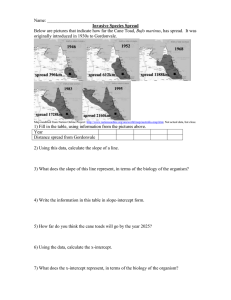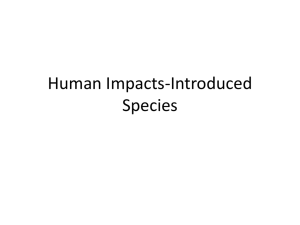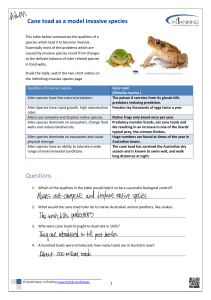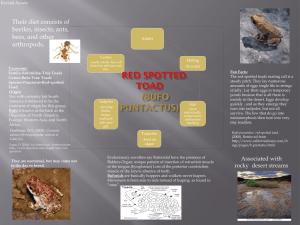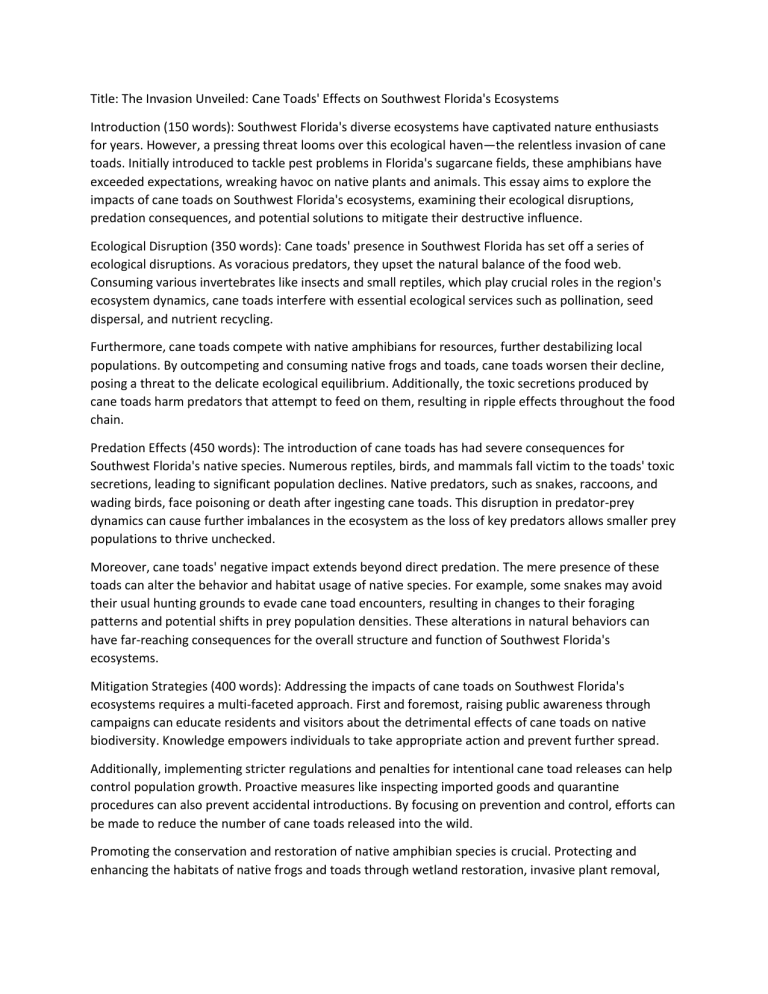
Title: The Invasion Unveiled: Cane Toads' Effects on Southwest Florida's Ecosystems Introduction (150 words): Southwest Florida's diverse ecosystems have captivated nature enthusiasts for years. However, a pressing threat looms over this ecological haven—the relentless invasion of cane toads. Initially introduced to tackle pest problems in Florida's sugarcane fields, these amphibians have exceeded expectations, wreaking havoc on native plants and animals. This essay aims to explore the impacts of cane toads on Southwest Florida's ecosystems, examining their ecological disruptions, predation consequences, and potential solutions to mitigate their destructive influence. Ecological Disruption (350 words): Cane toads' presence in Southwest Florida has set off a series of ecological disruptions. As voracious predators, they upset the natural balance of the food web. Consuming various invertebrates like insects and small reptiles, which play crucial roles in the region's ecosystem dynamics, cane toads interfere with essential ecological services such as pollination, seed dispersal, and nutrient recycling. Furthermore, cane toads compete with native amphibians for resources, further destabilizing local populations. By outcompeting and consuming native frogs and toads, cane toads worsen their decline, posing a threat to the delicate ecological equilibrium. Additionally, the toxic secretions produced by cane toads harm predators that attempt to feed on them, resulting in ripple effects throughout the food chain. Predation Effects (450 words): The introduction of cane toads has had severe consequences for Southwest Florida's native species. Numerous reptiles, birds, and mammals fall victim to the toads' toxic secretions, leading to significant population declines. Native predators, such as snakes, raccoons, and wading birds, face poisoning or death after ingesting cane toads. This disruption in predator-prey dynamics can cause further imbalances in the ecosystem as the loss of key predators allows smaller prey populations to thrive unchecked. Moreover, cane toads' negative impact extends beyond direct predation. The mere presence of these toads can alter the behavior and habitat usage of native species. For example, some snakes may avoid their usual hunting grounds to evade cane toad encounters, resulting in changes to their foraging patterns and potential shifts in prey population densities. These alterations in natural behaviors can have far-reaching consequences for the overall structure and function of Southwest Florida's ecosystems. Mitigation Strategies (400 words): Addressing the impacts of cane toads on Southwest Florida's ecosystems requires a multi-faceted approach. First and foremost, raising public awareness through campaigns can educate residents and visitors about the detrimental effects of cane toads on native biodiversity. Knowledge empowers individuals to take appropriate action and prevent further spread. Additionally, implementing stricter regulations and penalties for intentional cane toad releases can help control population growth. Proactive measures like inspecting imported goods and quarantine procedures can also prevent accidental introductions. By focusing on prevention and control, efforts can be made to reduce the number of cane toads released into the wild. Promoting the conservation and restoration of native amphibian species is crucial. Protecting and enhancing the habitats of native frogs and toads through wetland restoration, invasive plant removal, and pollution reduction can aid in their recovery and create ecological resilience against cane toad invasions. Furthermore, expanding research and monitoring programs can enhance our understanding of cane toad impacts and help develop effective management strategies. Scientists and conservationists can collaborate to identify innovative techniques for cane toad removal, such as traps or targeted biocontrol methods, while minimizing harm to non-target species. Conclusion (100 words): The uncontrolled proliferation of cane toads in Southwest Florida poses a significant threat to the region's ecosystems. However, through proactive measures like public awareness, regulation enforcement, habitat conservation, and scientific research, we can mitigate

